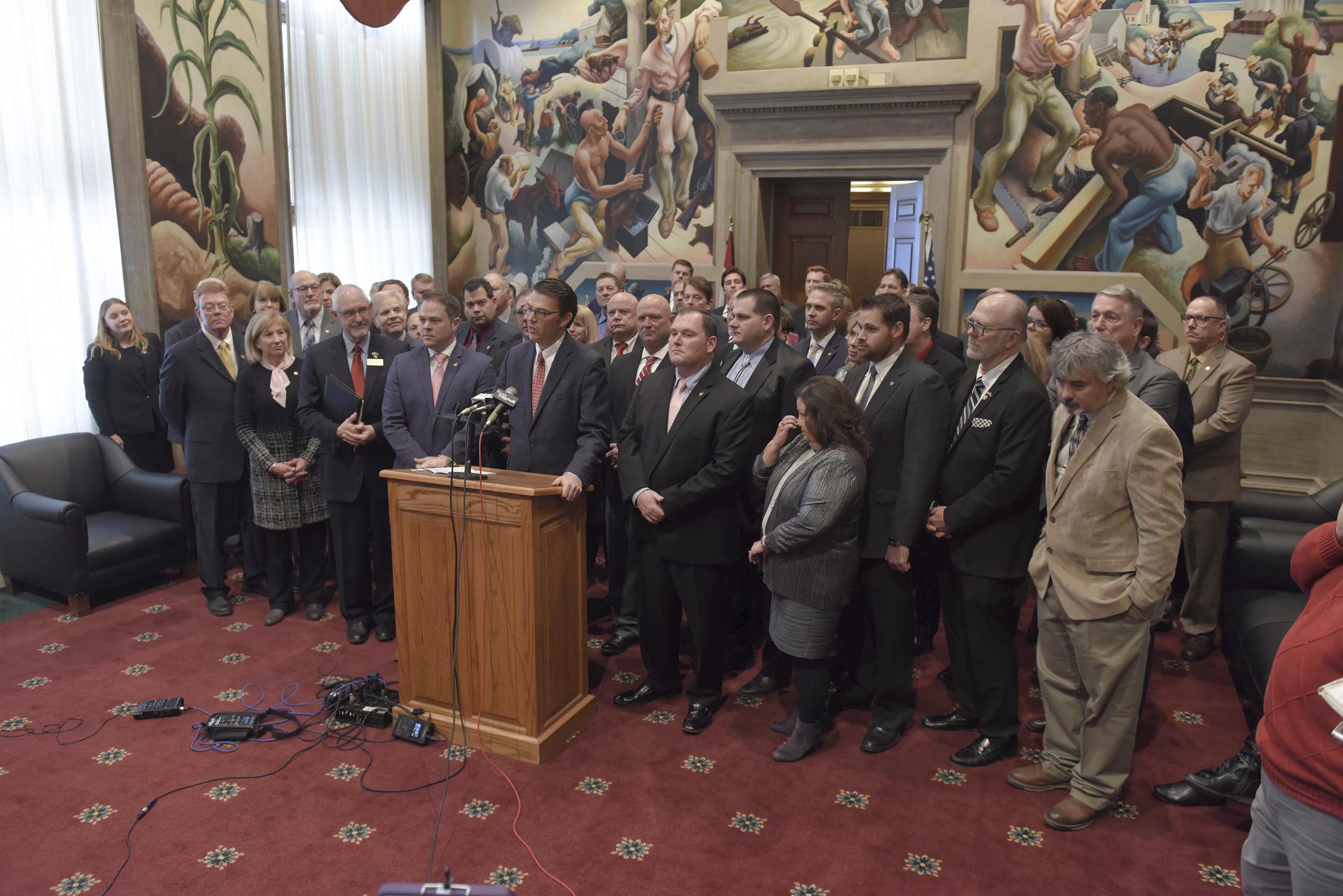Republicans have led the Missouri General Assembly for years now, relying on grassroots efforts, strong candidates and strong funding to make their strong conservative push in the Show-Me State. Missouri has long had red leanings, but the last decade has seen the party rise to new heights, securing a supermajority in the legislature before retaking almost every statewide office.
Former Missouri Republican Party chairman John Hancock attributes that success to the work of the House Republican Campaign Committee and the Senate Republican committee.
“They did exceptional jobs with candidate recruitment,” he said. “I think that is the single most important factor in how the majority is crowned.”
“They found the right candidates, they stacked them well,” he continued. “The operatives that were working on those races back in those days were exceptional, and those committees both did a very effective job.”
But Republicans’ success at the polls led to a number of significant victories for the party, as well as failures, but most importantly, it defined the history of the state.
One of the most Catherine Hanaway becomes the first female Speaker of the House as Missouri Republicans take control, serving from 2002 to 2004.
Republicans win a hotly-contested battle over the state’s budget with Democratic Gov. Bob Holden in 2003, sinking attempts to include tax hikes to fund the ever-increasing budget. The events helped stave off Holden’s re-election attempts, allowing Republican Matt Blunt to win the following general election, leading to four years of executive and legislative control for Republicans, which resulted in tort reform legislation and a revamping of the state’s education foundation formula.
Republicans also managed to pass sweeping cuts to the state’s Medicaid system, a controversial move that led to intense protests, launching Medicaid as one of the top political issues.
2008 proved to be an interesting year, as the General Assembly repealed campaign contribution limits. And while the move ushered in an era of unlimited contributions, a decade later, Missouri is still debating the issue of campaign contributions, placing limits back in place with the passage of Constitutional Amendment 2 in 2016.
But Republican success also resulted in the venturing into uncharted waters. Following the 2010 elections, the caucus election to determine the Senate Republicans’ choice resulted in a tie between Sen. Kevin Engler and Sen. Rob Mayer after repeated ballots. In the end, the winner (Mayer) was chosen by random drawing, foretelling a future of polarization among Senate Republicans.
2011 proved to be another contentious year, as the General Assembly used their strong numbers to override Gov. Jay Nixon’s veto of a Congressional redistricting map that eliminated the Congressional seat of Russ Carnahan.
In 2014, Republicans’ House majority proved to be the largest number of GOP seats held in that chamber in the history of the state. The last time a party held that many seats was when the Democrats had a 117-46 majority in 1981. Rep. Linda Black increased that number to 118 when she switched parties.
2014 also marked another significant point for the party, when Sen. Ron Richard became the first person in state history to serve as both House Speaker and Senate President Pro Tem, and the fifth person in U.S. history to do so.
A number of major changes to Missouri law also came in that year, as voters signed off on an amendment to the Constitution which granted lawmakers the ability to override a governor’s budget cuts. In addition to that, Republicans also managed to override Nixon’s veto of an income tax cut, marking the first-ever reduction in the general rate of the nearly-one-hundred-year-old income tax.
The Republicans also saw several losses during the past decade. House Speaker Steve Tilley’s departure during the midterm was one such hit for the party, as Tilley left the lead House seat to launch a governmental relations firm.
But even tougher blows were coming. The party saw its fair share of scandal, heartbreak and loss, perhaps the most painful in the memories of all being the suicide of State Auditor Tom Schweich.
The party was also rocked by scandal when Speaker John Diehl resigned in 2015, coupled with the resignation of Democratic Senator Paul LeVota, amidst allegations of sexual harassment and inappropriate relations with interns. However, those instances led to changes that many would agree were a step in the right direction, to rebuild the ethics of the legislature. Because of this, the sexual harassment policies received a much-needed upgrade, while the House began its recovery under the calm but strong guiding hand of now-Speaker Todd Richardson.
Scandal did not prove to be the downfall of the party, however, as Republicans hit the campaign trails hard in 2016. Following the success of now-President Donald Trump, Republicans swept every statewide office on the ballot in November 2016, a monumental night for the party and securing Missouri’s reputation as a red state for another cycle.
With a red surge, Republicans went on to pass right-to-work after years of failed or stalled attempts, but a union response in the form of a referendum petition has left that issue on hold until a vote of the people takes place in August.
And though Gov. Eric Greitens secured a Republican victory in 2016, 2018 has proven to be a tough year for the self-proclaimed outsider. After the revealing of a 2015 affair, the Governor was investigated by several entities, was threatened with impeachment, and could still face possible trial. That came to an end on May 29, when the Governor announced he would be stepping down effective Friday, June 1. Lt. Gov. Mike Parson will assume the role as chief executive.
Many Republicans have stated their support for Missouri’s next governor, with hopes of emerging from the past session as a stronger state party.
MO GOP Chairman Todd Graves released the following statement:
“Throughout his tenure as a Sheriff, State Representative, and State Senator, Mike has always worked hard for Missourians, and I am certain he will continue to hold a strong commitment to our state as Governor. There is no doubt our Party has faced a difficult couple of months – but make no mistake – Missouri Republicans know there is much at stake this November and we will be united in our efforts to champion common sense conservative values across the board,” Missouri GOP Chairman Todd Graves said. “The Missouri Republican Party looks forward to working with Mike Parson to defend our veto-proof majorities in the House and Senate. In addition, a united Republican Party will now focus on our number one goal: retiring Claire McCaskill from the United States Senate.”
Many wonder if the Republican sweeps can continue, noting that in recent months, amidst the controversy, Democrats have made steps to work toward stealing back seats.
The election in 2016 very well could have shaped state politics for years to come.
Republicans credit the red landslide to several factors: some say Hilary Clinton was not a good candidate, others point to Trump’s ability to activate the conservative base and reach them at the grassroots level.
Following the 2016 election, then-party chairman John Hancock said that the 2016 election had the potential to be a very long-lasting and aligning type of election.
“There’s always a danger for a party when it bears full governing responsibility,” Hancock said.
Hancock said that Democrats obviously have some opportunities to grow and that a disastrous cycle can hit at any time. He says that Democrats have nowhere to go up, and with the right candidate recruitment, some seats could always have the potential to switch quickly.
“But,” Hancock said with a chuckle, “I kept saying every two years that we couldn’t possibly win more seats, and I was wrong every two years.”










